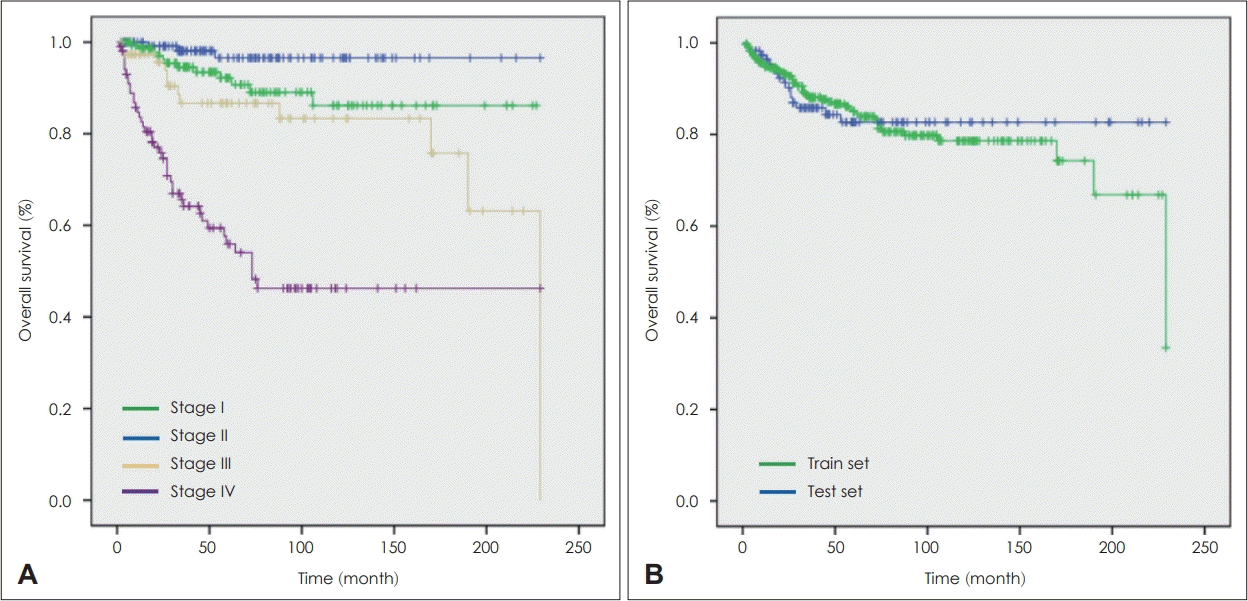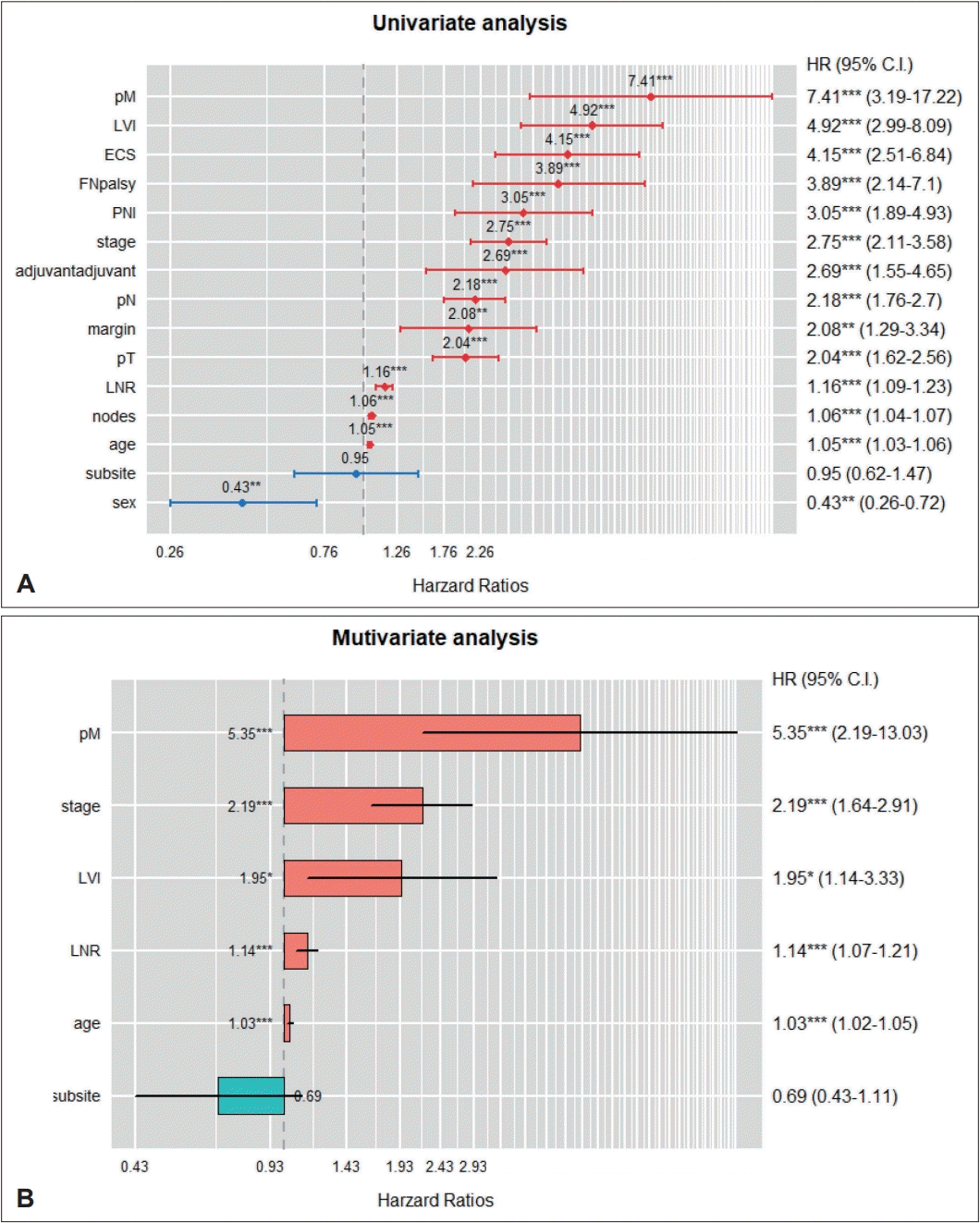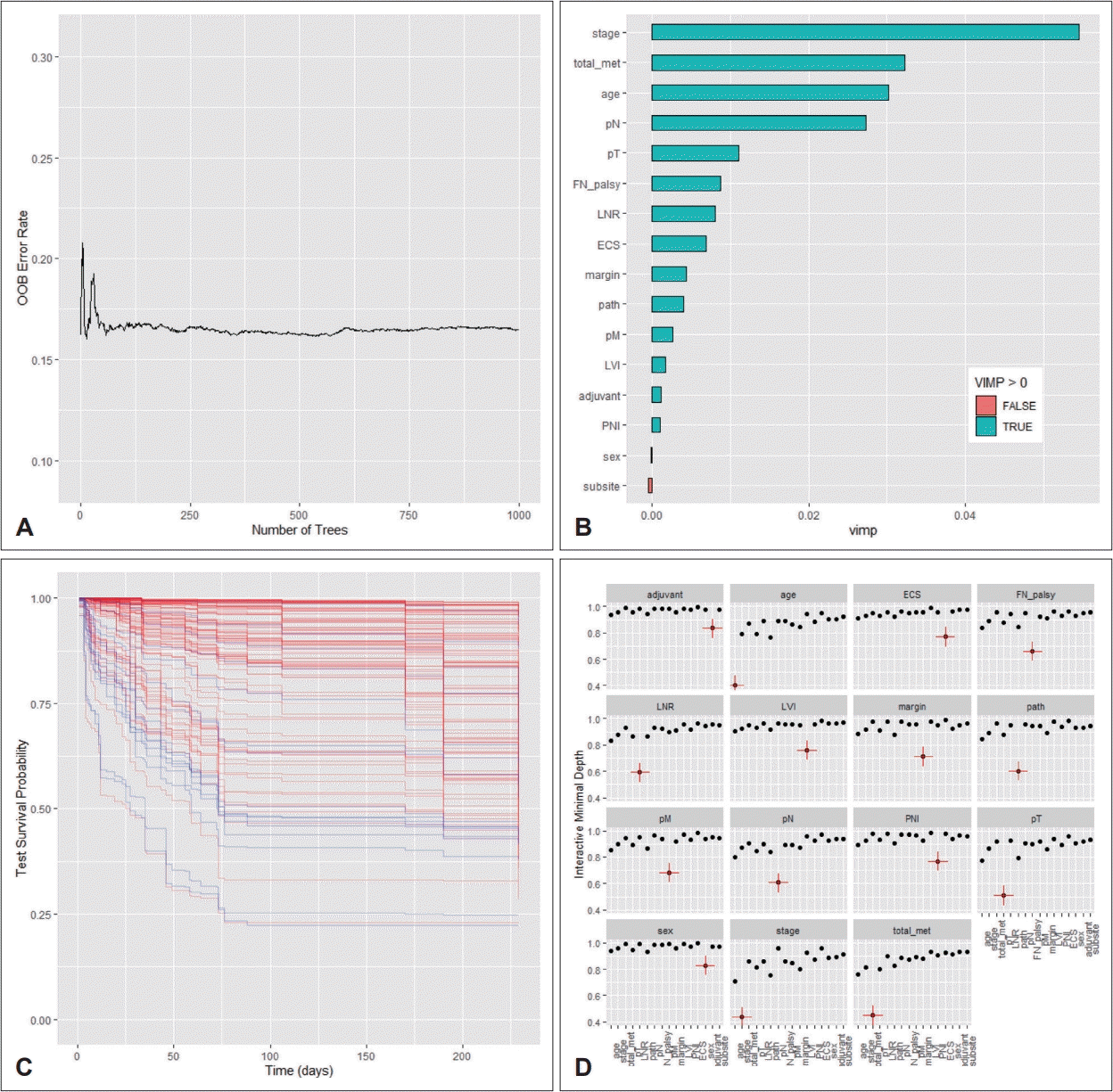1. Lewis AG, Tong T, Maghami E. Diagnosis and management of malignant salivary gland tumors of the parotid gland. Otolaryngol Clin North Am. 2016; 49(2):343–80.

2. Ali S, Palmer FL, Yu C, DiLorenzo M, Shah JP, Kattan MW, et al. Postoperative nomograms predictive of survival after surgical management of malignant tumors of the major salivary glands. Ann Surg Oncol. 2014; 21(2):637–42.

3. Ali S, Bryant R, Palmer FL, DiLorenzo M, Shah JP, Patel SG, et al. Distant metastases in patients with carcinoma of the major salivary glands. Ann Surg Oncol. 2015; 22(12):4014–9.

4. Ettl T, Gosau M, Brockhoff G, Schwarz-Furlan S, Agaimy A, Reichert TE, et al. Predictors of cervical lymph node metastasis in salivary gland cancer. Head Neck. 2014; 36(4):517–23.

5. Saintigny P, Zhang L, Fan YH, El-Naggar AK, Papadimitrakopoulou VA, Feng L, et al. Gene expression profiling predicts the development of oral cancer. Cancer Prev Res (Phila). 2011; 4(2):218–29.

6. Kann BH, Aneja S, Loganadane GV, Kelly JR, Smith SM, Decker RH, et al. Pretreatment identification of head and neck cancer nodal metastasis and extranodal extension using deep learning neural networks. Sci Rep. 2018; 8(1):14036.

7. Harrell FE Jr, Califf RM, Pryor DB, Lee KL, Rosati RA. Evaluating the yield of medical tests. JAMA. 1982; 247(18):2543–6.

8. Katzman JL, Shaham U, Cloninger A, Bates J, Jiang T, Kluger Y. DeepSurv: Personalized treatment recommender system using a Cox proportional hazards deep neural network. BMC Med Res Methodol. 2018; 18(1):24.

9. Ishwaran H, Gerds TA, Kogalur UB, Moore RD, Gange SJ, Lau BM. Random survival forests for competing risks. Biostatistics. 2014; 15(4):757–73.

10. Su X, Zhou T, Yan X, Fan J, Yang S. Interaction trees with censored survival data. Int J Biostat. 2008; 4(1):Article 2.

11. Lombardi D, McGurk M, Vander Poorten V, Guzzo M, Accorona R, Rampinelli V, et al. Surgical treatment of salivary malignant tumors. Oral Oncol. 2017; 65:102–13.

12. Godballe C, Schultz JH, Krogdahl A, Møller-Grøntved A, Johansen J. Parotid carcinoma: Impact of clinical factors on prognosis in a histologically revised series. Laryngoscop. 2003; 113(8):1411–7.

13. Vander Poorten VL, Balm AJ, Hilgers FJ, Tan IB, Loftus-Coll BM, Keus RB, et al. The development of a prognostic score for patients with parotid carcinoma. Cancer. 1999; 85(9):2057–67.

14. Hay A, Migliacci J, Zanoni DK, Patel S, Yu C, Kattan MW, et al. Validation of nomograms for overall survival, cancer-specific survival, and recurrence in carcinoma of the major salivary glands. Head Neck. 2018; 40(5):1008–15.

15. Mannelli G, Alessandro F, Martina F, Lorenzo C, Bettiol A, Vannacci A, et al. Nomograms predictive for oncological outcomes in malignant parotid tumours: Recurrence and mortality rates of 228 patients from a single institution. Eur Arch Otorhinolaryngol. In press. 2019.

16. Balachandran VP, Gonen M, Smith JJ, DeMatteo RP. Nomograms in oncology: More than meets the eye. Lancet Oncol. 2015; 16(4):e173–80.

17. Chen F, Ma X, Li S, Li Z, Jia Y, Xia Y, et al. MRI-based radiomics of rectal cancer: Assessment of the local recurrence at the site of anastomosis. Acad Radiol. 2021; 28 Suppl 1:S87–94.

18. Zhang H, Hu S, Wang X, He J, Liu W, Yu C, et al. Prediction of cervical lymph node metastasis using MRI radiomics approach in papillary thyroid carcinoma: A feasibility study. Technol Cancer Res Treat. 2020; 19:1533033820969451.

19. Zhang M, Bao Y, Rui W, Shangguan C, Liu J, Xu J, et al. Performance of 18F-FDG PET/CT radiomics for predicting EGFR mutation status in patients with non-small cell lung cancer. Front Oncol. 2020; 10:568857.









 PDF
PDF Citation
Citation Print
Print



 XML Download
XML Download